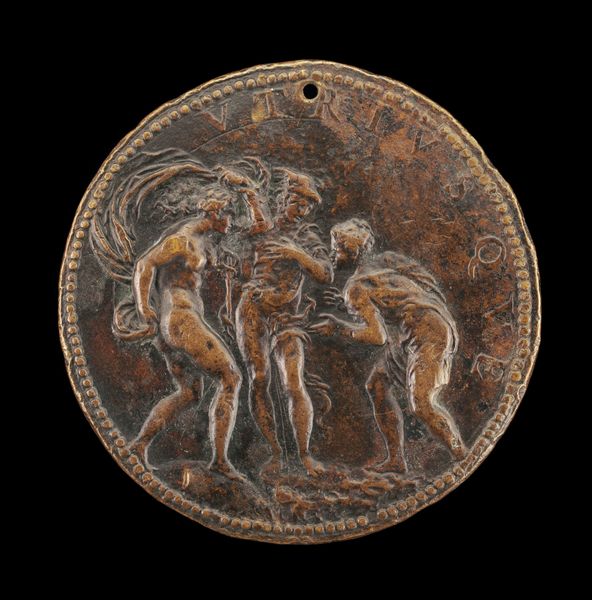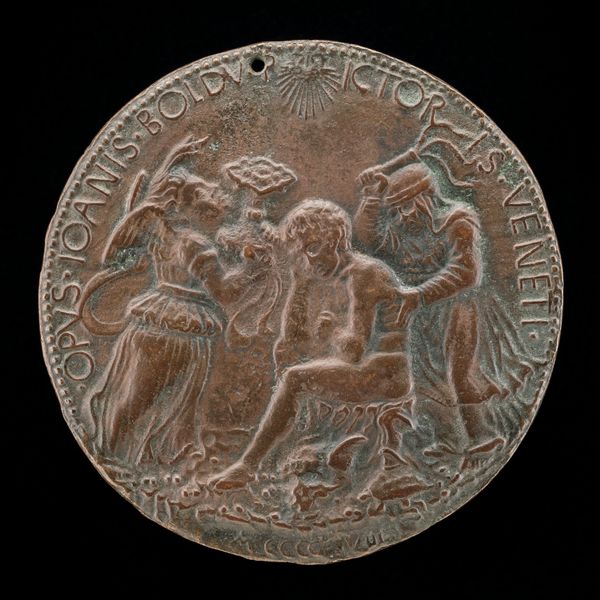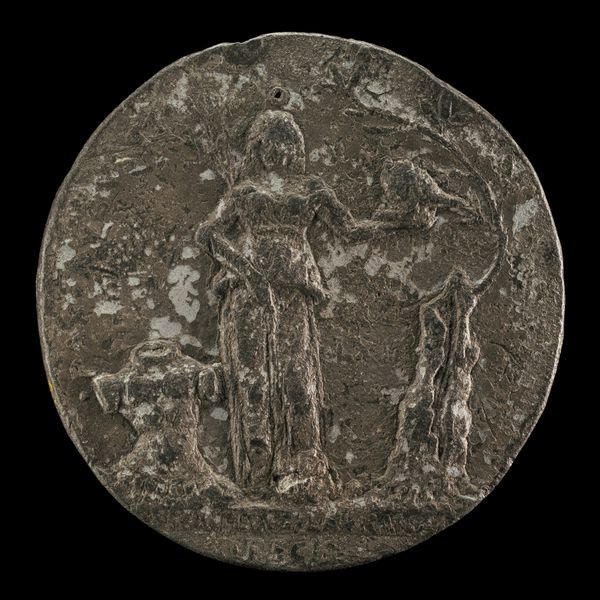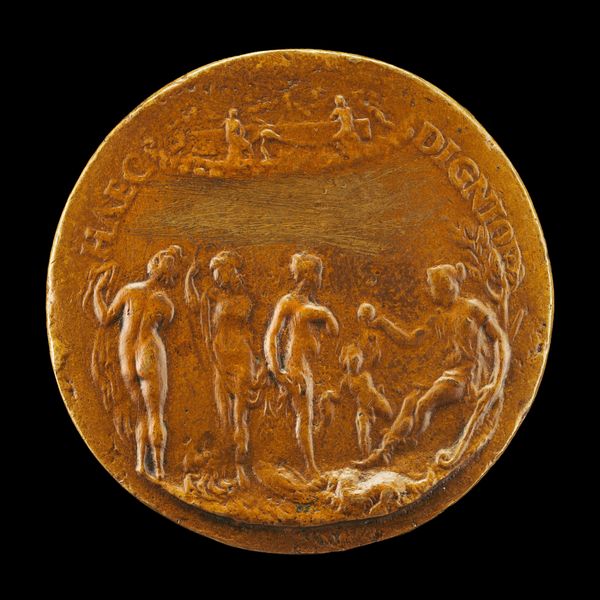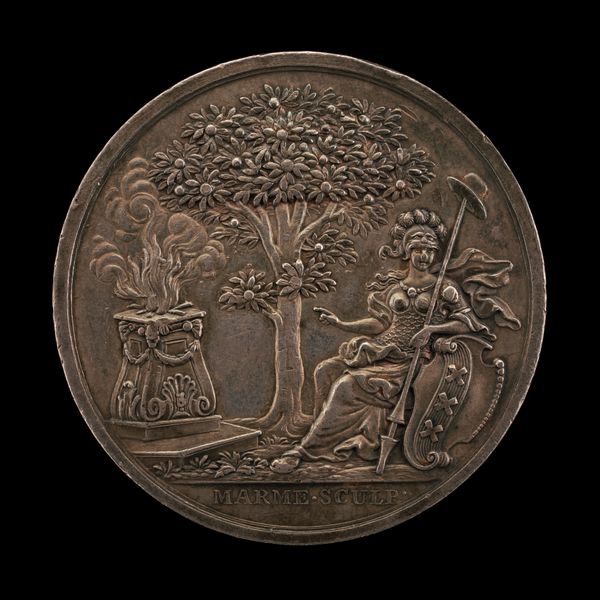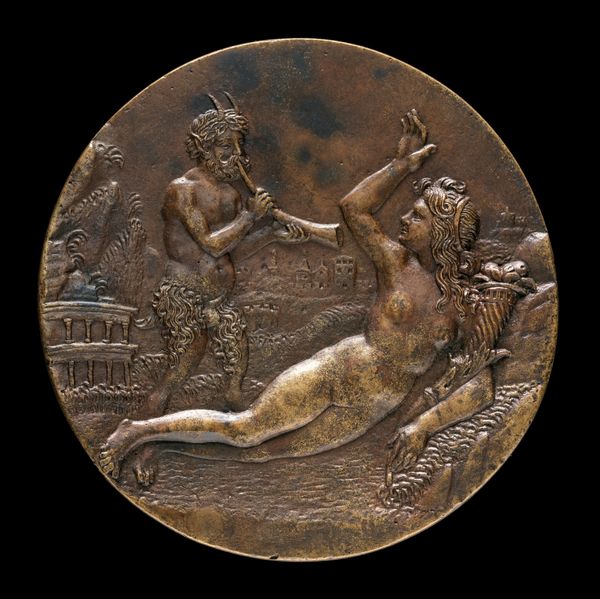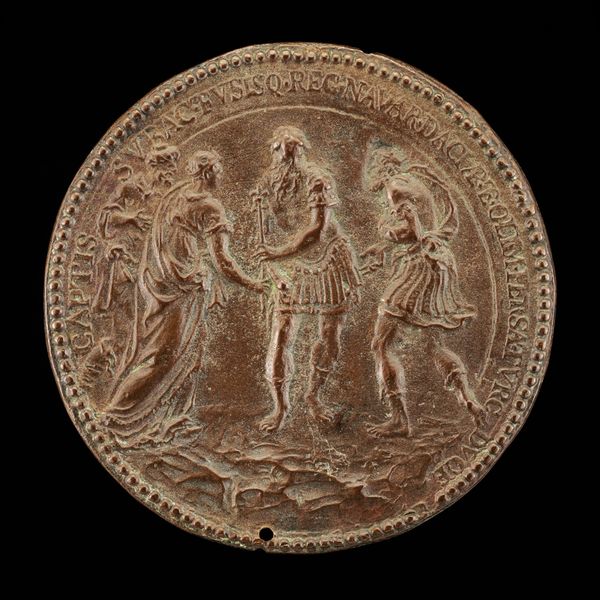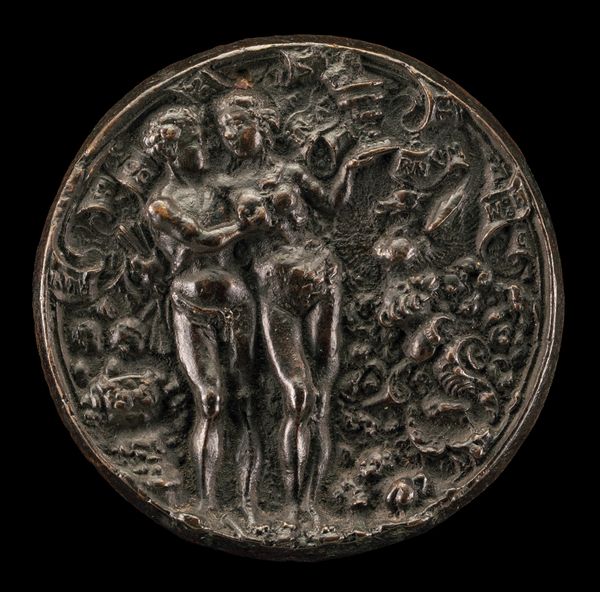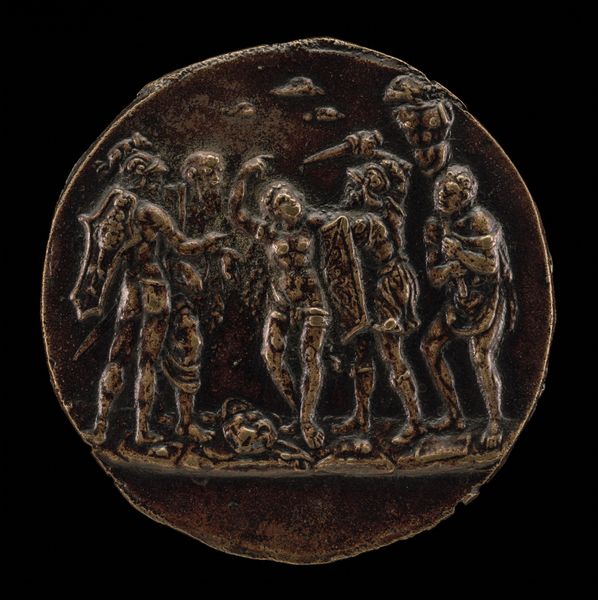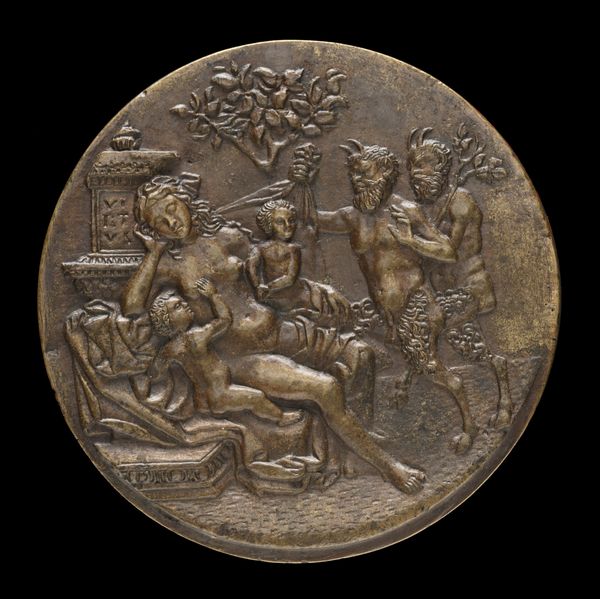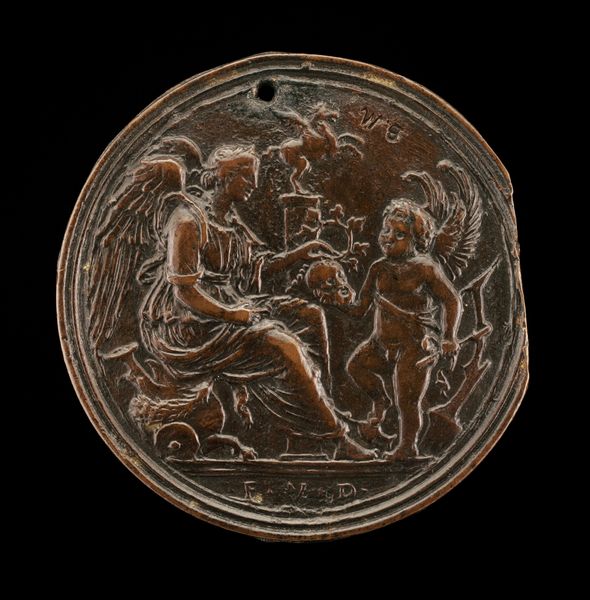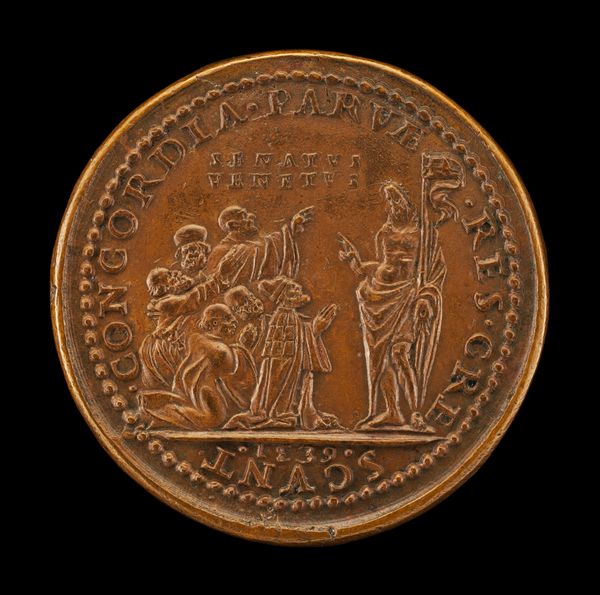![Minerva, Hercules, and Vice [reverse] by Antonio Abondio](/_next/image?url=https%3A%2F%2Fd2w8kbdekdi1gv.cloudfront.net%2FeyJidWNrZXQiOiAiYXJ0ZXJhLWltYWdlcy1idWNrZXQiLCAia2V5IjogImFydHdvcmtzLzAyYzJhYmJhLWVlZTMtNGIzYS1iNWViLWNhZThkMDJmMWVhZi8wMmMyYWJiYS1lZWUzLTRiM2EtYjVlYi1jYWU4ZDAyZjFlYWZfZnVsbC5qcGciLCAiZWRpdHMiOiB7InJlc2l6ZSI6IHsid2lkdGgiOiAxOTIwLCAiaGVpZ2h0IjogMTkyMCwgImZpdCI6ICJpbnNpZGUifX19&w=3840&q=75)
relief, bronze, sculpture
#
medal
#
allegory
#
sculpture
#
relief
#
bronze
#
mannerism
#
figuration
#
sculpture
#
history-painting
Dimensions: overall (diameter): 5.43 cm (2 1/8 in.) gross weight: 28.8 gr (0.063 lb.) axis: 12:00
Copyright: National Gallery of Art: CC0 1.0
Editor: This is "Minerva, Hercules, and Vice," a bronze medal created around 1571 by Antonio Abondio. The relief depicts three figures in a landscape setting. The overall mood seems to convey a struggle between virtue and… something less so. How do you interpret this work, and what draws your attention most? Curator: The power dynamics in this medal, and the context in which it was created, speak volumes. Consider the historical moment: Europe roiled by religious and political conflict. Hercules, a figure of strength and heroic virtue, is caught in a triangulation between Minerva, wisdom and strategic warfare, and Vice, who appears to be tempting Hercules. Do you notice how Minerva, armed with a shield, firmly plants her spear, literally grounding herself, next to a vulnerable Hercules? Editor: Yes, she definitely has a strong stance and direct gaze compared to Hercules who looks almost as though he’s staggering. Vice is almost seductive, beckoning him, her clothing seems to be slipping off her shoulders. Curator: Precisely. This scene serves as a powerful allegory. Is Abondio subtly referencing the moral and ethical challenges facing leadership during times of unrest, positioning it as a wrestling of virtues versus vices? How does Hercules factor as a patriarchal symbol with humanistic values caught within this interplay? Consider then the female representations, both of equally divine status, positioned at either side; do you notice where your eyes keep shifting? Editor: Between Minerva and Vice, definitely. They seem to represent such opposite paths, but also... different kinds of power. Minerva is power in its most established form. Vice offers... freedom, of a kind. It definitely encourages me to think about power more broadly. Curator: Exactly. And by presenting these tensions so starkly, Abondio isn't just creating a beautiful object, they’re provoking conversation. Medals such as this functioned as symbols, meant to be circulated, discussed, and debated within intellectual circles, especially the visual tension created between the goddesses. It really begs us to consider how art of the past intersects with debates we still grapple with today around morality and accountability, particularly for individuals in power. Editor: I’m realizing that these little bronzes are full of important, complex social dialogues. Thanks for showing me all this!
Comments
No comments
Be the first to comment and join the conversation on the ultimate creative platform.
